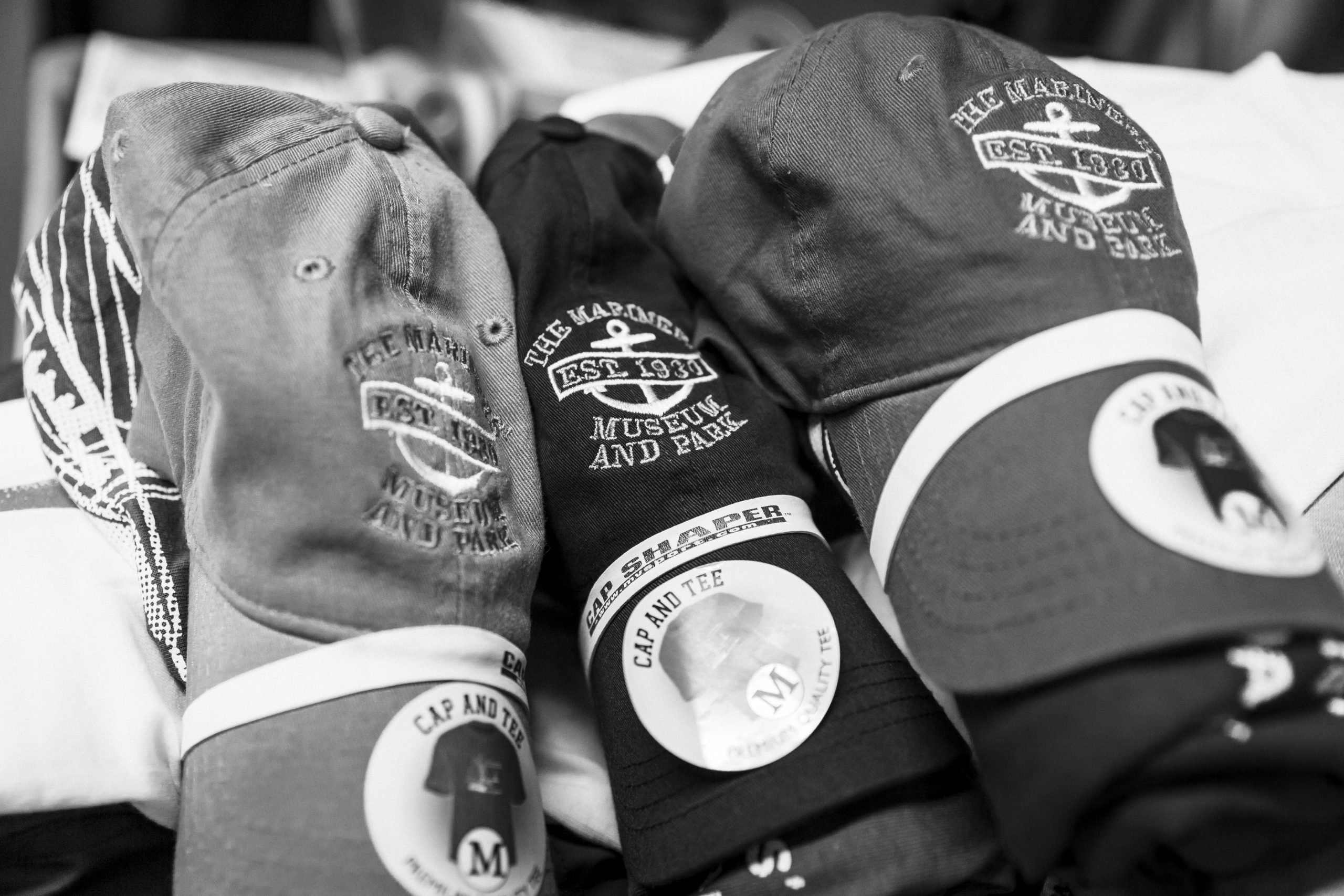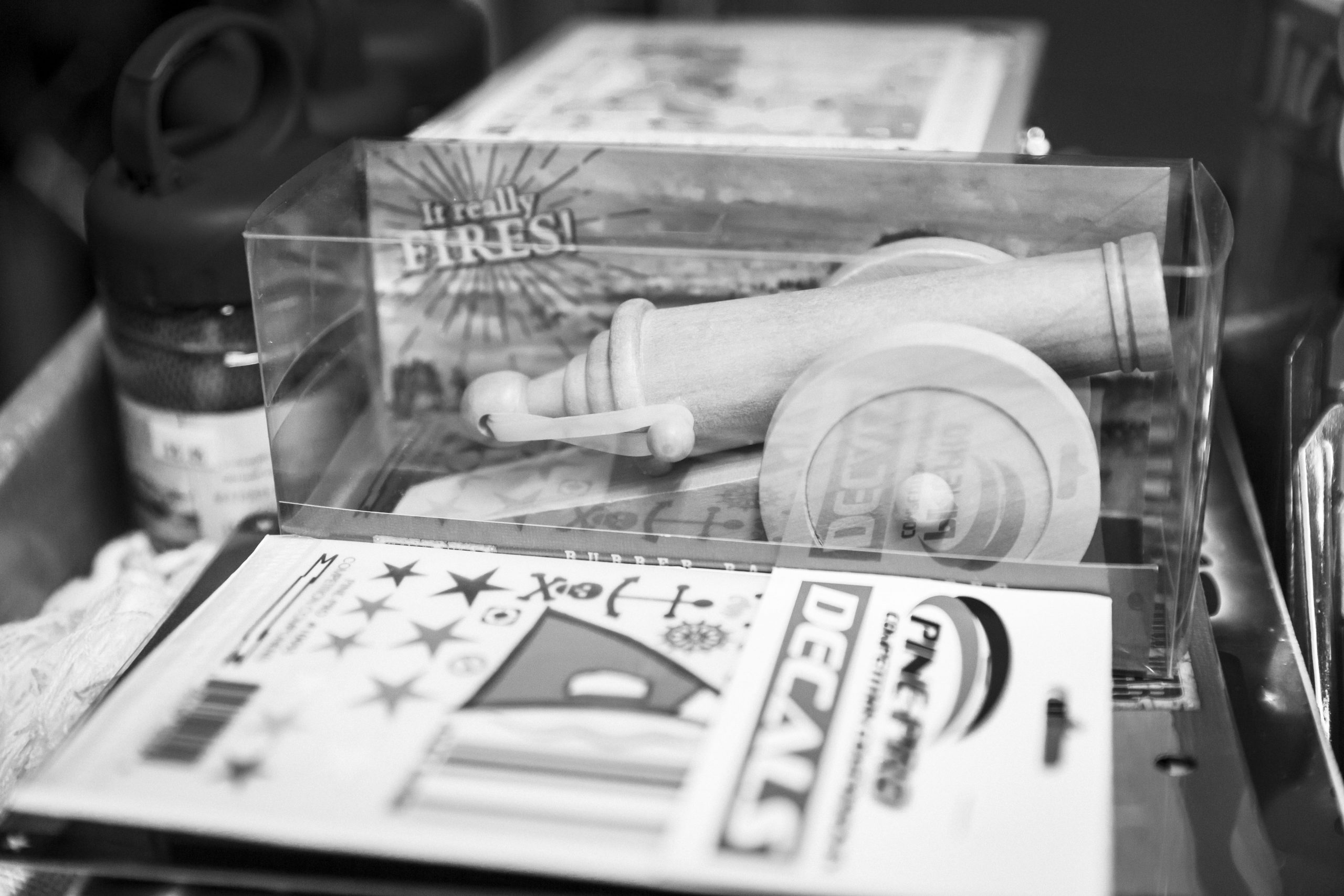Episode III – Digitization of the Print
In a museum not so far far away there’s not just one, but two Mariners’ crew whose work is so interconnected that even a pandemic can’t change that. Now, our Library Information Specialist and Cultural Heritage Photographer are discovering what “working closely” looks like at a distance.
A Reference in References
An unassuming white door is nestled in the center of a white wall you’d never even notice was there unless someone pointed it out to you. Through that door is what we call Gallery 1. Inside it, a large table fills the front of the room to lay out large items. It’s filled with books, photos, drawings, and the most high-tech shelves I’ve ever seen! Seriously, these are not your grandpa’s stagnant library shelves. With the push of a button, they slide together, closing one aisle and revealing the next aisle of records.
My geeky brain was immediately reminded of that scene in Star Wars – Episode IV. It’s the famous scene when Luke, Leia, Han, and Chewie are trapped in the trash compactor and the walls are literally closing in on them! But don’t worry, these walls have sensors so if you leave so much as a stool in the aisle they won’t be closing. No Death Star scenes being reenacted at The Mariners’ Museum. 😉 Although, there may be an extremely high potential for lots of Star Wars references!
“These are not the records you are looking for.”
~ Obi-Wan Kenobi/Amanda Shields
The Last Archive
I met up with Rachel, our information specialist, among the fancy archive shelves. She was pulling antique Chris-Craft boat drawings, hull cards, photos, manuals, and more to fulfill orders that have been placed by patrons wanting information on their own Chris-Craft vessels.
In case you aren’t familiar with them: Chris-Craft Boats was a boat manufacturer from the 1920s -1980s. They are known primarily for making innovative, luxurious, high-quality boats that were more affordable and accessible to the American middle class. After World War II, the brand became practically synonymous with pleasure boating. When the company was sold, the Museum acquired the archives of Chris-Craft Industries in 1986.
This time of year a lot of people like to work on their boat and they use this material to help fix it up or just learn more about it. As you can imagine, working remotely and having limited access in the middle of peak boating season was difficult until Rachel could physically get back into the Museum Archives.
Coronavirus: A Museum Menace
The Museum galleries closing to the public, and by default, our remote-work phase, occurred very suddenly back in early March when a COVID-19 outbreak developed on Virginia’s Eastern Shore. At first, we thought it would be just a couple weeks of working from home … obviously, we’ve gotten a little more than we bargained for. For most staff members, like the ones you’ll meet here, remote work requires some creativity. Unfortunately, a Library Information Specialist can’t exactly bring home the entirety of the Archives, nor can the Cultural Heritage Photographer pack up the whole photography studio, much to their chagrin.
Most of Rachel’s work is physically in the Museum helping researchers, fulfilling Chris-Craft orders, and inventorying items in the Chris-Craft Collection. Usually, she can be found in the archives pulling materials, or at her desk responding to inquiries. However, with the Museum galleries closed, she had to figure out what work she could do from home. Luckily, staff members were allowed a couple days to go to the Museum to get anything they might need to begin working remotely. For Rachel, this meant she could grab some crucial materials, like Chris-Craft The Essential Guide … essential to Chris-Craft and her job!
She continued helping researchers where she could and updating the material that she sends out to those interested in Chris-Craft boat drawings. Each boat has a drawing list. Rachel managed to standardize and update the contact information on all of those documents. This makes it more manageable when she mails them out. Thanks to the Collective (the Museum’s digital asset management system where staff can easily find images, documents, videos, etc.), she’s been able to answer some research questions by accessing material that has already been digitized.
Return to the Archives
Since some staff has been able to return to work on-campus (in a very limited capacity, with special permission, and physical distancing), Rachel has been working at the Museum one day a week fulfilling Chris-Craft orders or research requests that have come in. She pulls the materials from the shelves and drawers of the archives to be digitized. This is a fancy way of saying that we’re going to make these items and materials available, and therefore preserving them, in digital form. This is where Brock, our Cultural Heritage Photographer comes in!
In the “before times,” Brock and Rachel worked together pretty closely. For example, if Rachel needed a hand pulling extra-large plans in the Archives, Brock could simply come help. Now, they have to limit how often they’re near each other and make sure they wear masks if they have to be close. Rachel pushes the cart with all the plans and drawings to be digitized into the office, just outside the photography studio, and leaves it there. Now, Brock can prep the studio, then come out and grab the cart when he’s ready. This way, the two never come in close contact with one another.
The Studio Awakens
Brock is so happy to be back in his studio! … Even if it’s only once a week. As the Cultural Heritage Photographer, his main responsibility is to photograph items in the Museum’s Collection. Since taking the objects home is not really an option, he needs access to the Collection for that. He really has to make the most of his one day spent in the office. Primarily, he’s photographing items that have been ordered by patrons, but as a whole, he’s digitizing, editing, printing, and shipping a week’s worth of work in less than one full workday.
“…it’s stressful, but at the end of the day, I am glad to have done the work.” ~ Brock S.
When Brock isn’t in the studio, his focus is on responding to customer inquiries and organizing digital assets that can be found in the museum catalog search. He’s also been writing some fascinating blogs!
The Gift Shop Gives Back
Remember how I said much of the work we do here at The Mariners’ Museum is all interconnected? Here’s another example. In my last blog post, we met up with Noelle, our Visitor Services Manager, in the gift shop. She was really excited about updating the online gift shop! Well, it’s Brock that photographs all the new items to be posted on the website. Then, Noelle uses Brock’s images to build a beautiful, working catalog so visitors can shop for their maritime treasures online. Yet again, this is just one example of how everyone’s roles in this special place are tied to one another.
A New Hope
With all the work now being done via Google Hangouts and email, instead of just stopping by each other’s desk, it definitely adds an extra dimension of challenge to any project. However, both Brock in the Digital Services Department, and Rachel in the Library said that hadn’t changed the team dynamic. They have strong teams that work well together. Once it’s safe to do so, they are greatly looking forward to in-person meetings, just talking with coworkers, and the Museum galleries being open to visitors once again. Until then, they’re still serving our guests! It just looks a little different right now.
If you’d like more information on a specific Chris-Craft Vessel, you can request more information here. And make sure to subscribe to the Museum blogs to get notified when any of our team members post new content!
Until next time, May The Force Be With You! (Sorry – you know I had to) 😉
Fair Winds and Following Seas, my friends.
(All images in this blog: Amanda Shields/Mariners’ Museum and Park)

